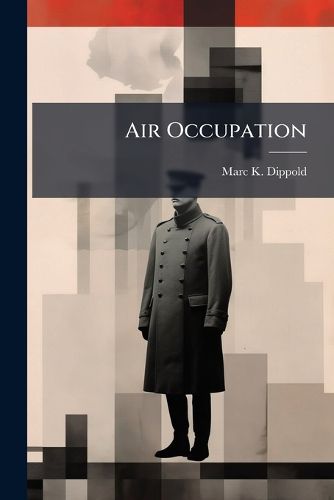Readings Newsletter
Become a Readings Member to make your shopping experience even easier.
Sign in or sign up for free!
You’re not far away from qualifying for FREE standard shipping within Australia
You’ve qualified for FREE standard shipping within Australia
The cart is loading…






Asking the right questions. The adage "be careful what you wish for--you may get it" should be on the minds of airpower advocates coveting the air occupation mission. It may be a double-edged sword that expands the relative influence of the U.S. Air Force, but also saddles it with a complex, persistent, and costly mission. The U.S. Air Force must ensure it asks the right questions before embarking on a serious campaign to "win" the air occupation debate. What do we mean by the term air occupation? The term air occupation can be very perplexing. Unfortunately, neither the term air occupation, nor the word occupation, is defined in Joint or Air Force doctrine. Of the many historic occupation objectives, air occupation most likely applies to less intrusive scenarios that attempt to coerce, enforce sanctions, or create buffer zones. Probable air occupation tasks to achieve these objectives would include a combination of presence, intelligence, surveillance, reconnaissance, psychological operations, humanitarian airdrops and airlift, and punitive strikes.
This work has been selected by scholars as being culturally important, and is part of the knowledge base of civilization as we know it. This work was reproduced from the original artifact, and remains as true to the original work as possible. Therefore, you will see the original copyright references, library stamps (as most of these works have been housed in our most important libraries around the world), and other notations in the work.
This work is in the public domain in the United States of America, and possibly other nations. Within the United States, you may freely copy and distribute this work, as no entity (individual or corporate) has a copyright on the body of the work.
As a reproduction of a historical artifact, this work may contain missing or blurred pages, poor pictures, errant marks, etc. Scholars believe, and we concur, that this work is important enough to be preserved, reproduced, and made generally available to the public. We appreciate your support of the preservation process, and thank you for being an important part of keeping this knowledge alive and relevant.
$9.00 standard shipping within Australia
FREE standard shipping within Australia for orders over $100.00
Express & International shipping calculated at checkout
Asking the right questions. The adage "be careful what you wish for--you may get it" should be on the minds of airpower advocates coveting the air occupation mission. It may be a double-edged sword that expands the relative influence of the U.S. Air Force, but also saddles it with a complex, persistent, and costly mission. The U.S. Air Force must ensure it asks the right questions before embarking on a serious campaign to "win" the air occupation debate. What do we mean by the term air occupation? The term air occupation can be very perplexing. Unfortunately, neither the term air occupation, nor the word occupation, is defined in Joint or Air Force doctrine. Of the many historic occupation objectives, air occupation most likely applies to less intrusive scenarios that attempt to coerce, enforce sanctions, or create buffer zones. Probable air occupation tasks to achieve these objectives would include a combination of presence, intelligence, surveillance, reconnaissance, psychological operations, humanitarian airdrops and airlift, and punitive strikes.
This work has been selected by scholars as being culturally important, and is part of the knowledge base of civilization as we know it. This work was reproduced from the original artifact, and remains as true to the original work as possible. Therefore, you will see the original copyright references, library stamps (as most of these works have been housed in our most important libraries around the world), and other notations in the work.
This work is in the public domain in the United States of America, and possibly other nations. Within the United States, you may freely copy and distribute this work, as no entity (individual or corporate) has a copyright on the body of the work.
As a reproduction of a historical artifact, this work may contain missing or blurred pages, poor pictures, errant marks, etc. Scholars believe, and we concur, that this work is important enough to be preserved, reproduced, and made generally available to the public. We appreciate your support of the preservation process, and thank you for being an important part of keeping this knowledge alive and relevant.